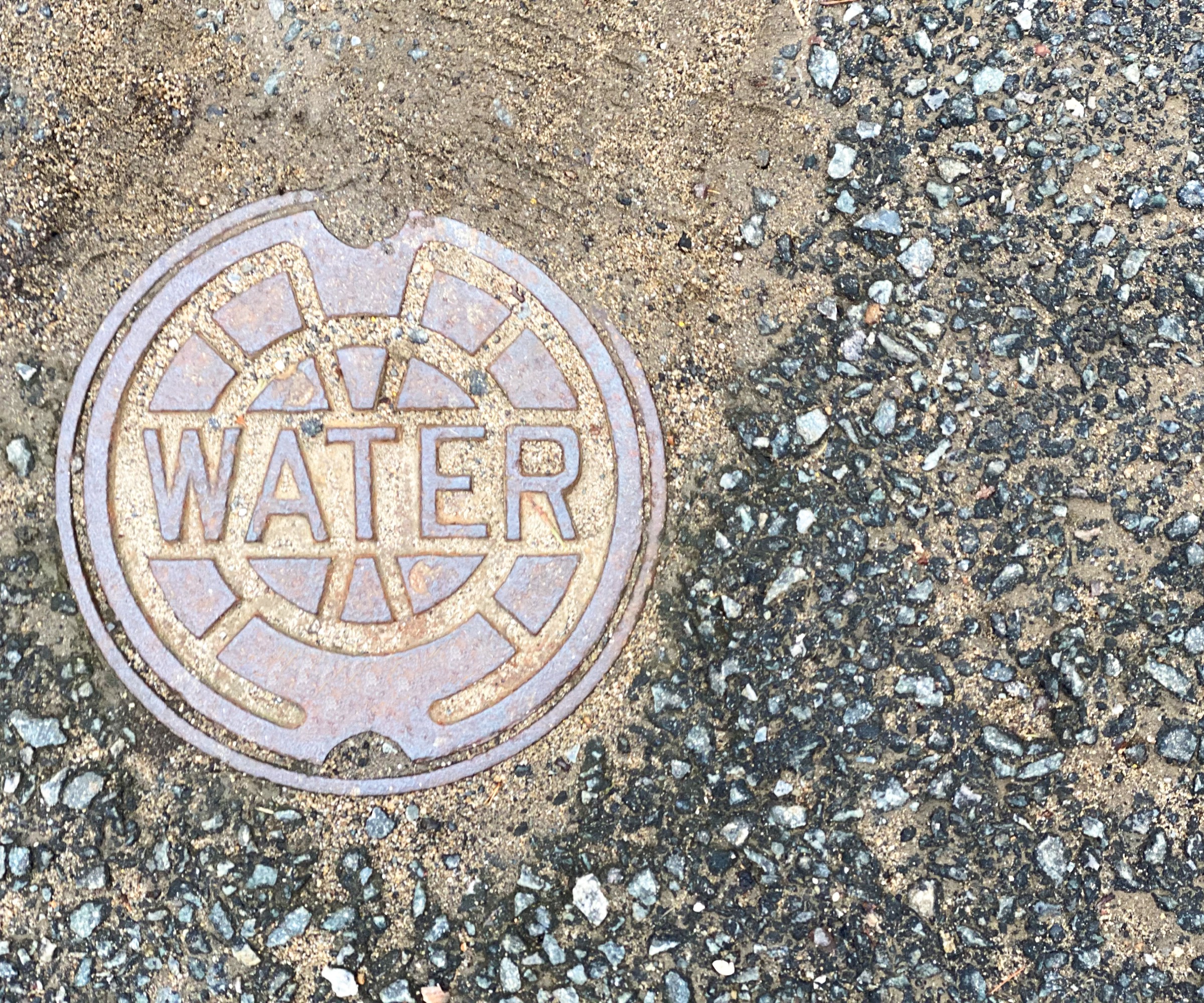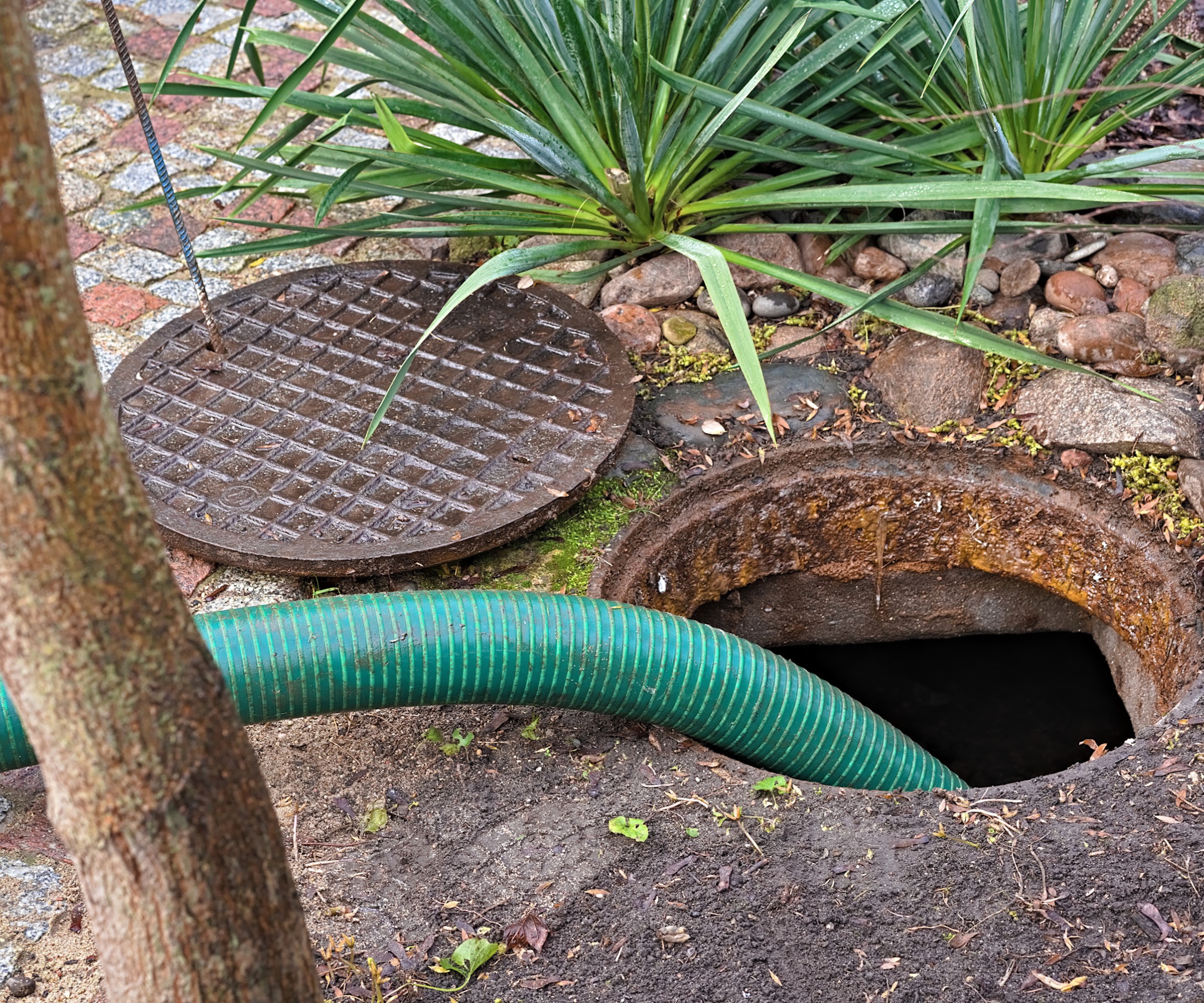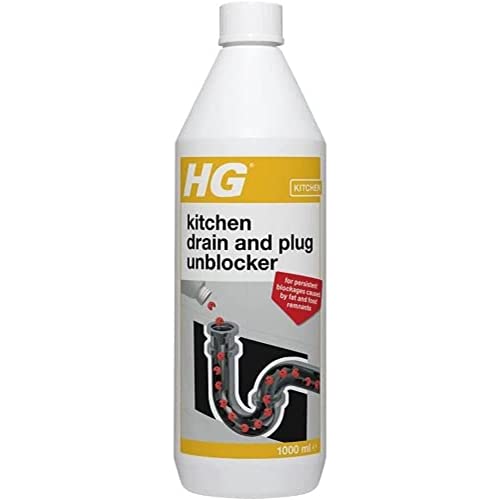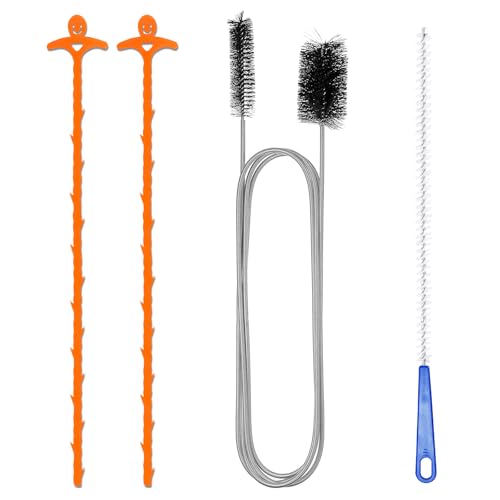Who is responsible for shared drains on my property? What every homeowner should know
Understanding your drainage layout and responsibilities now will save you from financial and legal headaches in the future

Hidden below ground and rarely seen or heard, drainage isn’t something most of us think about – until there’s a problem. But if you don’t know which pipes you’re responsible for, you could end up ignoring issues, passing the buck, or even causing long-term damage. That’s why it’s vital to understand who’s in charge of any shared drains on your property.
In some cases, your local water authority will handle the upkeep, but many drainage systems are privately owned and entirely your responsibility. Depending on how wastewater leaves your home, you may also share responsibility with your neighbours. In these situations, it’s wise to agree in advance on how to manage blockages and leaks – avoiding confusion and awkward conversations later on.
If you’re unsure where you stand, don’t worry. We’ve spoken to several drainage experts, including Callan Hill, Business Development Manager at SB Drain Services, to help you understand your rights and responsibilities, prepare for discussions with neighbours and your local water board, and know what to do if you plan any building work that could affect your drains.

Callan has worked in the drainage industry for over eight years, tackling everything from hands-on operational work to strategic business growth and client relationship management. "I’m passionate about the drainage sector because no two days are ever the same," he says. "Each project brings new challenges, opportunities to solve complex problems, and I’m always looking for ways to innovate and improve within this ever-evolving field."
Understanding drains vs sewers
A drain that leaves a property will have a different name depending on whereabouts in the drainage system the pipes are located.
“A private drain is a pipe that carries wastewater or surface water in a single property – from your sinks, toilets, or showers – either to a lateral drain or a public sewer,” says Callan. “If the pipe only serves your property and lies within your boundary, it’s classed as a private drain, and it’s the homeowner’s responsibility to maintain or repair it.”
In most cases, that will be the freeholder. If you live in a leasehold property, it will be the responsibility of the freeholder, or everyone with a share of the freehold.
“A lateral drain usually lies outside your property boundary and connects your private drain to the public sewer,” Callan continues. “Even if it only carries your waste but runs beyond your boundary, it’s still classed as a lateral drain – and that’s the responsibility of your local water company.”
“Public sewers carry waste water from multiple properties to a treatment facility. They’re owned and maintained by the local water company, and different regions are covered by different providers – for example, Thames Water, Anglian Water, or Affinity Water,” Callan concludes.
Typically, it will be obvious which water company is in charge of your sewerage. “However,” says Callan, “some water companies only handle clean water supply, while others deal with both clean and foul water. In some areas, you might have more than one company managing the water going in and out of your property, so do double check.”
If you want to check who your wastewater supplier is (and therefore who is responsible for your lateral drains and public sewers), visit Water UK’s Find Your Supplier tool and enter your postcode.
Bring your dream home to life with expert advice, how to guides and design inspiration. Sign up for our newsletter and get two free tickets to a Homebuilding & Renovating Show near you.
How can I tell if I have shared drains?
"Older properties, particularly in terraces or converted buildings like flats etc, often have shared private drains that collect waste from several homes before joining the public sewer, and can be hard to locate," says Aaron Willcox, owner of AW Plumbing and Heating and winner of the Checkatrade Plumber of the Year Award 2025 for the South region.
There are a few ways to find out if your drains are shared. “It might be shown in your property or title deeds, or in a property survey – sometimes these include a drainage layout showing private and shared sections,” says Callan. “That’s hit and miss, though; some homeowners get that information when they buy a property, others don’t.”
“You can also contact your local water authority, as they may have sewer maps showing where the public sewer starts, although that’s not guaranteed either,” Callan explains.
If you’re comfortable doing a bit of investigating yourself, Callan suggests you lift manhole covers on your property to see which direction the pipes run and whether they connect with neighbouring properties – though again, that’s only a rough guide.

"If you suspect you’re sharing, a CCTV drainage company is the best way to find out," says Aaron. A drainage contractor can send a camera down the pipe to map where it runs and check its condition. These drainage surveys can reveal cracked pipes, root ingress, or hidden junctions, and they’re invaluable if you’re planning building work or dealing with repeated blockages.
“A professional drain survey isn’t as costly as people think – for an average house, you’re looking at around £300–£400. It’s worthwhile, especially before buying or selling a property or starting costly building work,” says Callan. “We use a tool called a Sonde, which acts as a locator for pre-construction surveys. The camera head at the end of our reel has a built-in locator, and we scan above ground to pinpoint exactly where the drain runs beneath the surface. It’s extremely accurate, even in terms of depth, so if builders need to dig, they’ll know whether the pipe is 300 millimetres down or half a metre down. It really helps them avoid damaging pipework during any construction.”
What are my legal responsibilities?
If you discover you have shared drainage, you will need to get this mapped out if it isn't already. One of the more common reasons for shared drainage now is that a property or group of properties has been built with a communal septic tank or sewage system since it was originally deemed to expensive or complicated to connect the properties to public sewers.
"If you share drainage or a septic tank with neighbours, clear communication is key. A written agreement is a must and saves everyone a lot of awkward doorstep conversations later on," says Aaron Willcox. He advises including the following in any written agreement:
- Who’s responsible for arranging emptying and maintenance
- How repair or upgrade costs are divided
- When and how often servicing is carried out
- Access arrangements for tankers or engineers
"While this may seem like a tedious task, the good news is that a shared system can actually be cheaper to run. You all chip in for emptying, servicing and repairs," says Aaron.
"Although some people are put off by the idea of shared drainage, or off-mains drainage systems like a shared septic tank or sewage treatment plant, they do have their benefits," says Thomas Goodman at MyJobQuote.co.uk. To begin with, they take up less space, so you could retain more of your garden for growing plants and veggies."
"Then, you have the advantage of being able to share general maintenance costs, including emptying, servicing and upgrades. Another bonus is that with more people using the system, it’s less likely for a problem to go unnoticed."
You can expect these maintenance costs to total £200 to £300 per year, according to Callan Hill. "The main bit of maintenance is to remove what we call sludge, which sinks to the bottom of the tank, and builds up over time. Every six to 12 months – depending on how much the tank is used – you'll need to hire someone with a tanker to suck out basically all of the sludge so it doesn't block up and cause problems."

What to do if you are building over or near shared drains?
Thinking about putting up an extension, conservatory, or a fancy new outdoor kitchen? If you’re building over or near a shared or public drain, you’ll need a Building Over Agreement from your local water authority.
"This agreement basically ensures you don’t build something that stops them from accessing or repairing the drain later," says Aaron. "You’ll need to submit drawings and drainage plans, and they’ll usually carry out inspections before and after the work."
"Even for private drains, building control can require approval if the work is within one metre of a boundary or affects the drain’s structure," adds Callan. "Missing this step can cause major issues when selling a property, as mortgage lenders often ask for proof of permissions."
"Skip the paperwork, and you could face problems later, especially when it comes time to sell your home," Aaron warns. "So, as boring as forms can be, it’s better to tick the box now than dig up your patio later."
Requirements for a Building Over Agreement
"You’ll definitely need to get a Building Over Agreement if you wish to build within three metres of a public sewer or lateral drain that can’t be rerouted," says Thomas Goodman. And in some cases, as Callan has pointed out, you may need one for private drains. So before you start any work, it's worth commissioning a drainage survey (as explained above) and consulting with a structural engineer.
"Before you can get an agreement, the water company that’s responsible for the pipes in question will usually carry out an assessment of the area first and may ask for trial holes to be dug, so they can accurately calculate the risks involved," Thomas adds. "Once they’re satisfied, an agreement can be drawn up. To help protect their assets, this may include strict guidelines on the method of construction you can use."
According to Thames Water, there are typically three classes of build over agreement, depending on the size of the public sewer or lateral drain you wish to build over.
There are also a number of essential documents that you'll need to provide alongside your application. These include:
- A site map showing the boundary lines between yours, and any neighbouring properties.
- Ground floor plans showing both the existing and proposed building and drainage layout plan. This will incorporate sewer pipes, manholes, sewer flow direction, including any private connections onto the sewer.
- Sectional drawings showing the foundation design, sizing and depths in relation to the public sewer pipe.
- Proof of entitlement of disability benefit discount (eg. Blue Badge) if applicable.
- A piling method statement (If you’re planning to use piling foundations).
- Structural calculations for raft foundations (if used).
As of October 2025, Thames Water charge the following for a Building Over Agreement application:
Class 1: £130 - the internal diameter of the sewer is 150mm/6 inches or less
Class 2: £440 - the internal diameter of the sewer is 151mm to 375mm/7 inches to 14 inches
Class 3: £520 - the internal diameter of the sewer is over 375mm/15 inches + (additional legal costs starting at £1,000)
These charges are updated on 1st April each year.

How much would it cost to connect to mains drainage?
If the seeming hassle of installing off mains drainage or shared drainage has left you considering creating a private drain that connects to public sewage directly, it's worth understanding the price and disruption of such a job.
"Connecting a property to the mains drainage system can seem like it's the most convenient solution, but it often comes with large upfront costs," says Callan. "The total expense depends on the distance from your property to the nearest public sewer, local authority fees, ground conditions, and whether roads or pavements need to be excavated."
Callan explains that mains connection costs usually range from around £5,000 to £15,000, but in some cases (particularly for rural properties far from the sewer network) it could exceed £20,000 once excavation, reinstatement, and connection charges are included.
"By comparison, a standard Septic tank installation for a single property would generally costs £3,000 to £7,000, including installation," he tells us. "However, ongoing maintenance such as emptying and inspection would add around £200 to £300 to that cost per year."
"Sewage treatment plants are more advanced and environmentally friendly than septic tanks, producing cleaner effluent," Callan says. "Installation typically costs between £6,000 to £15,000, with annual servicing and electricity costs of roughly £300 to £400."
In conclusion, while connecting to the mains offers long-term convenience and minimal maintenance, on-site systems can be more cost effective when sewer access is limited. The best option depends on factors such as local ground conditions, environmental regulations, and the property’s distance from the nearest main drain.
FAQs
Who owns the shared drain on my property?
"Unless you live in a flat or your lateral drains are unadopted, shared drains are the property of the local water company," says Thomas Goodman at MyJobQuote.co.uk. "So, the first point of call for locating them is to contact your local water company. They should be able to provide a map of where all the shared pipes run."
If your shared drains are unadopted or private, you own them and are therefore responsible for their upkeep and any repairs.
What are my responsibilities for a shared drain?
According to Thames Water: "You're responsible for all waste drainage pipes (such as gullies, gutters and drains) within your property boundary, so long as they serve just your property. If your drain joins up with your neighbours, we own the joint part."
If you spot an issue with the shared parts of the drain, you can report them to your local water company.
For issues in a Thames Water area, go to the 'Report a Problem' section of the Thames Water website.
Other water supplier links:
- Scottish Water 'Report a Problem' portal
- Anglian Water 'Report an Issue' site
- Southern Water 'Report a Problem' site
- Welsh Water 'Report an Issue site
- South West water 'Report a Problem' landing page
- Northumbrian Water 'Report a Problem' web page
- United Utilities 'Got a Problem? web page
What happens if a shared drain gets blocked?
When shared private drains become blocked, or there is an issue with your septic tank, it is the homeowners' responsibility to call out a drainage expert and all costs of fixing the issue should be shared between the affected parties.
In all other cases, you should contact your wastewater supplier as explained above.
Do I need permission to build near a shared drain?
Yes, you will need permission in the form of a Building Over Agreement if you are building within three metres of a public sewer or lateral drain, within one metre of a property boundary, or anywhere that affects the drain’s structure. Costs vary between water suppliers, but expect to pay from £150 to upwards of £500 depending on the work involved.
Failure to get the right permissions from your water supplier and local building control department could esults in fines, and difficulties in selling your home in future. You may be required to pay to return the pipework and drainage to its original configuration.
SUDs regulations mean it is now necessary to take steps to ensure your driveway drainage is sufficient to avoid pooling or runoff from your property.
A soakaway can be a good option for this in addition to measures such as a French drain or even a drainage field. Take a look at drainage costs to start budgeting for your property.

Amy Cutmore is a UK-based journalist who has specialised in consumer tech and home improvement for two decades, covering everything from planning permission and paint colours to solar panels and soundbars.
She's been a writer, editor and head of content for sites including Ideal Home (as 'Girl About Tech'), Homes & Gardens, Livingetc, Saga Magazine, Grand Designs, The Guardian, The English Home, Tom's Guide, Expert Reviews and Trusted Reviews.
When she's not getting to grips with her overgrown garden or visiting washing machine factories (she can attest that they're not much different whether you're in Korea, Slovenia, Italy or Japan), you'll find her planning a new kitchen extension. Or boring people senseless about Formula 1 (and her triumphs in the F1 Fantasy League).



